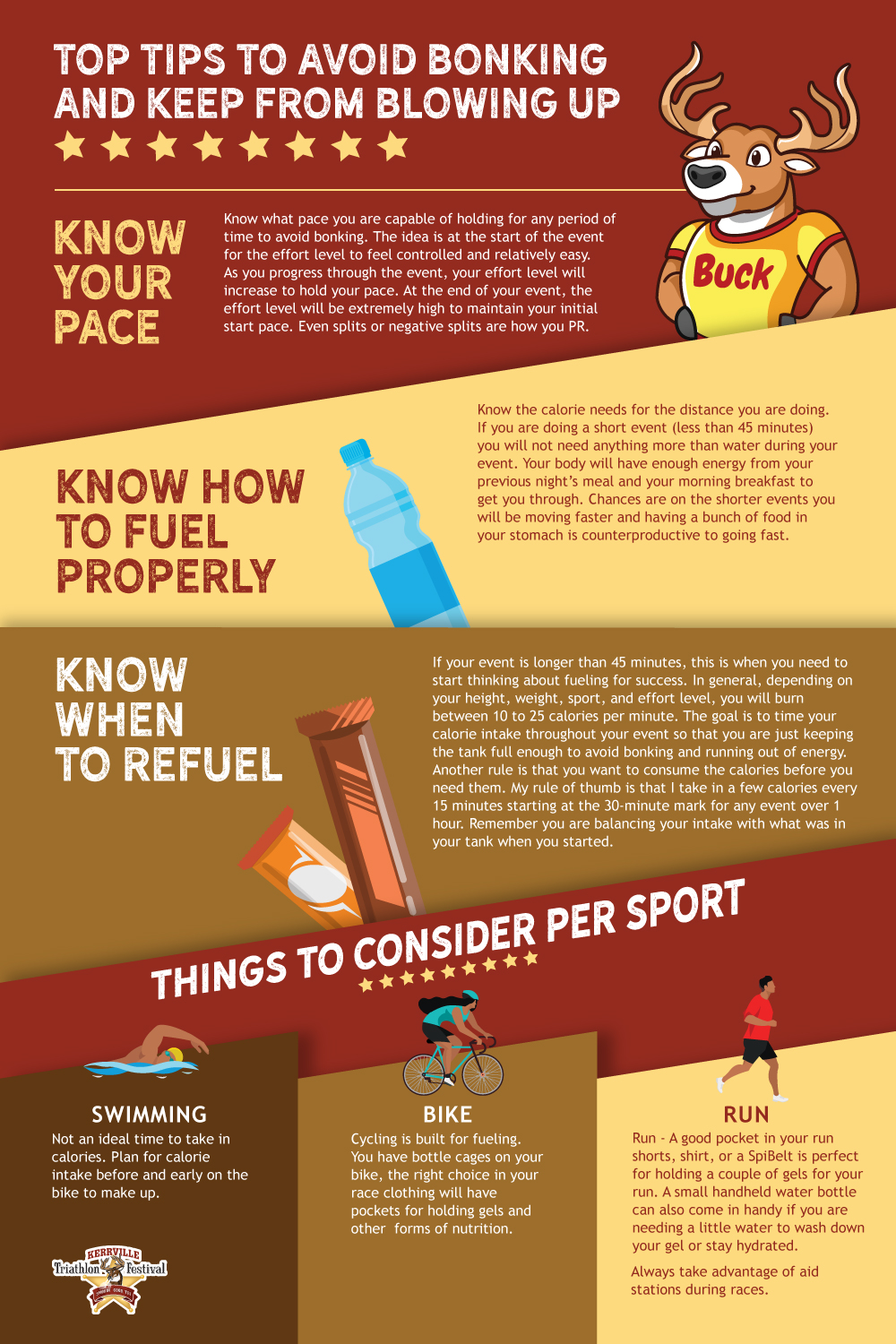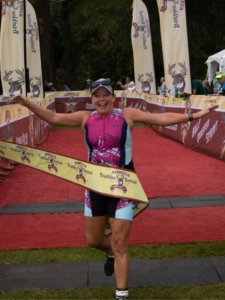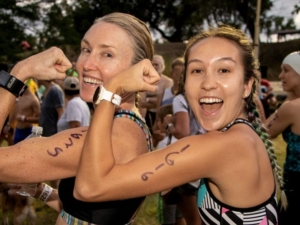Avoid Bonking & Keep From Blowing Up
What is bonking? Bonking is when you run out of energy to complete your event. Like a car running out of gas 10 miles into a 20-mile trip. You have no fuel to continue. What is blowing up? Blowing up is starting way too fast or maintaining too high of a pace at different points of your event, which can lead to surpassing your lactate threshold & cramping causing you to stop or slow down. Like if you just put the pedal to the floor in your car and blow your gaskets or transmission. You still have plenty of fuel, but you broke other parts of your car. If you struggle with this, keep reading to learn how to avoid the bonk and prevent from blowing up.
To keep it simple, here are the top tips to Avoid Bonking and Keep from Blowing Up
 Know Your Pace. Know what pace you are capable of holding for any period of time to avoid bonking. The idea is at the start of the event for the effort level to feel controlled and relatively easy. As you progress through the event, your effort level will increase to hold your pace. At the end of your event, the effort level will be extremely high to maintain your initial start pace. Even splits or negative splits are how you PR.
Know Your Pace. Know what pace you are capable of holding for any period of time to avoid bonking. The idea is at the start of the event for the effort level to feel controlled and relatively easy. As you progress through the event, your effort level will increase to hold your pace. At the end of your event, the effort level will be extremely high to maintain your initial start pace. Even splits or negative splits are how you PR. - Know How to Fuel Properly. Know the calorie needs for the distance you are doing. If you are doing a short event (less than 45 minutes) you will not need anything more than water during your event. Your body will have enough energy from your previous night’s meal and your morning breakfast to get you through. Chances are on the shorter events you will be moving faster and having a bunch of food in your stomach is counterproductive to going fast.
- Know When to Refuel. If your event is longer than 45 minutes, this is when you need to start thinking about fueling for success. In general, depending on your height, weight, sport, and effort level, you will burn between 10 to 25 calories per minute. The goal is to time your calorie intake throughout your event so that you are just keeping the tank full enough to avoid bonking and running out of energy. Another rule is that you want to consume the calories before you need them. My rule of thumb is that I take in a few calories every 15 minutes starting at the 30-minute mark for any event over 1 hour. Remember you are balancing your intake with what was in your tank when you started.
Things to consider per sport
- Swimming. Swimming is not the ideal sport for taking in calories during a triathlon. When you are completing a tri, you need to consider calorie-intake into account and be prepared to start fueling early on the bike to avoid bonking.
 Cycling. Cycling is built for fueling. You have bottle cages on your bike, the right choice in your race clothing will have pockets for holding gels and other forms of nutrition. There are also tons of other equipment you can add to your bike to pretty much carry as much as you want. One key is to use the aid stations on course so that you are not carrying too much. Why spend a ton of money on an 18-pound bike when you are going to carry 3 to 6 pounds of nutrition? Learning how to take a bottle hand up or even stop quickly at an aid station to make sure you have what you need is important and worth every second that you might think you are losing by just blowing by the aid station without refueling. Items we recommend consuming on the bike: water, fluids with calories, gels, chews, and bars.
Cycling. Cycling is built for fueling. You have bottle cages on your bike, the right choice in your race clothing will have pockets for holding gels and other forms of nutrition. There are also tons of other equipment you can add to your bike to pretty much carry as much as you want. One key is to use the aid stations on course so that you are not carrying too much. Why spend a ton of money on an 18-pound bike when you are going to carry 3 to 6 pounds of nutrition? Learning how to take a bottle hand up or even stop quickly at an aid station to make sure you have what you need is important and worth every second that you might think you are losing by just blowing by the aid station without refueling. Items we recommend consuming on the bike: water, fluids with calories, gels, chews, and bars.- Running. A good pocket in your run shorts, shirt, or a SpiBelt is perfect for holding a couple of gels for your run. A small handheld water bottle can also come in handy if you are needing a little water to wash down your gel or stay hydrated. Aid stations are also the key for runners. Knowing the frequency of the aid stations and what they will be supplied with before the event will help you come up with the proper nutrition plan on the run. Items I recommend consuming while running: water, fluids with calories, gels, and chews.

To sum it up, what you need to do to avoid bonking is, know your body (pace), know the event (what nutrition do they offer on course), have a plan to carry additional fuel, and then practice with different amounts and mixtures of nutrition at different paces until you have the perfect plan. This will all vary based on the type and length of your event, so be sure to use these tips during your Kerrville Tri training. After all, practice makes perfect!
